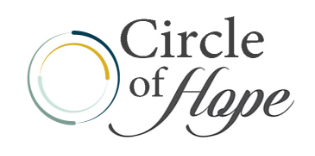For people who struggle with an eating disorder, sitting with your closest friends and family around a table spread with food is a terrifying prospect. It’s what makes this time of year, with a bevy of social holidays centered around eating and drinking, so tricky. It’s also a principal way how eating disorders relate to substance abuse.
Interestingly enough, it’s also a tough time of year for those of us recovering from drug or alcohol addiction. So, we decided to take a closer look at the relationship between eating disorders and substance abuse.
Eating Disorders and Substance Abuse Share the Same Stigma
There is a considerable stigma associated with people who have an eating disorder. When you think of someone who is struggling with an ED, you might think of female celebrities that appear on the covers of gossip magazine with the words “deathly thin” or “disappearing.”
However, eating disorders don’t only affect women. Ten percent of cases detected are in males. Typically, the onset of eating disorders will start at a young age (12-25 years). According to Medical News Today, someone with anorexia has 5-8 times greater risk of dying early in life while bulimia doubles that risk. Furthermore, eating disorders have the highest mortality rate of any mental health disorder.
Somebody with anorexia has a 5.8-times greater risk of dying early, compared to healthy individuals with no eating disorders. Bulimia doubles the risk of premature death.
Spotting someone with an eating disorder an be more difficult than you think. Not everyone shows the same physical or psychological signs of disordered eating. While it might be physically apparent for some people (excessively thin), it’s also common to maintain a healthy body weight or sometimes even overweight. Here are further resources for ‘How Eating Disorders Relate to Substance Abuse,’ with a complete overview of studies linking the two and much more.
So, What is the Actual Definition of an Eating Disorder?
eat·ing dis·or·der
ēdiNG diˈsôrdər/
noun
noun: eating disorder; plural noun: eating disorders
- any of a range of psychological disorders characterized by abnormal or disturbed eating habits (such as anorexia nervosa).
Typically someone with an eating disorder seeks to control their food intake and their weight. A skewed body image is one of the most common symptoms. For example, they will see themselves as “too fat” even if they are in fact, dangerously thin. They may participate in dangerous behaviors such as excessive exercise, binge eating (eating large amounts of food), purging behaviors (self-induced vomiting), use of laxatives or diuretics, and substance abuse.
There are different types of eating disorders which include anorexia nervosa, bulimia, EDNOS (eating disorder not otherwise specified).
Substance abuse like eating disorders, are influenced by genetic, biological, environmental, and psychological factors. Scientists estimate that genetic factors account for between 40 to 60 percent of a person’s vulnerability to addiction, including the effects of environment on gene expression and function. Multiple shared neurotransmitters are thought to be involved in both eating and substance use disorders. – National Eating Disorders Association

If you’ve found out more from our look at ‘How Eating Disorders Relate to Substance Abuse,’ and realized it may be time to seek treatment for yourself (or a loved one) contact us today at Circle of Hope. Our staff of specialists are well trained in dual diagnosis and can help you recover from these afflictions in a safe, welcoming environment, so don’t hesitate to call!

